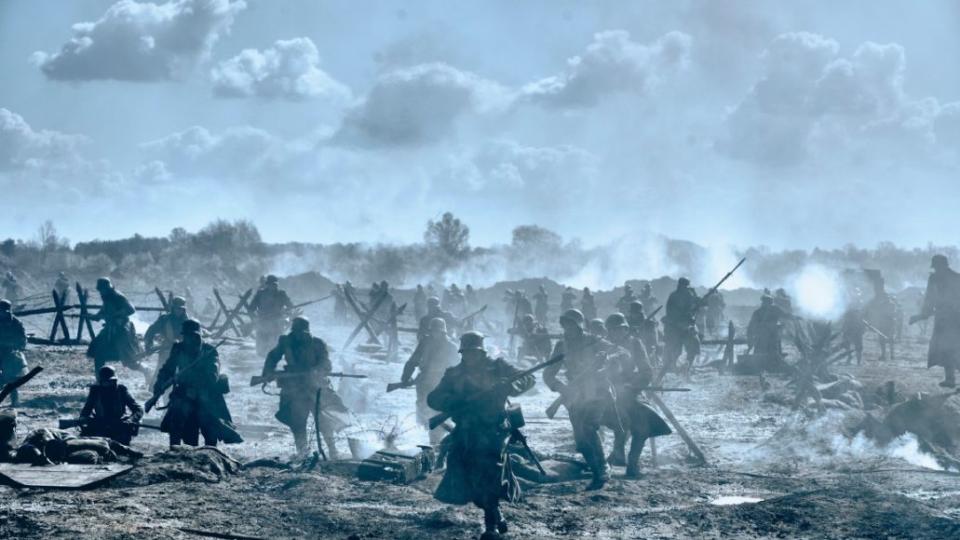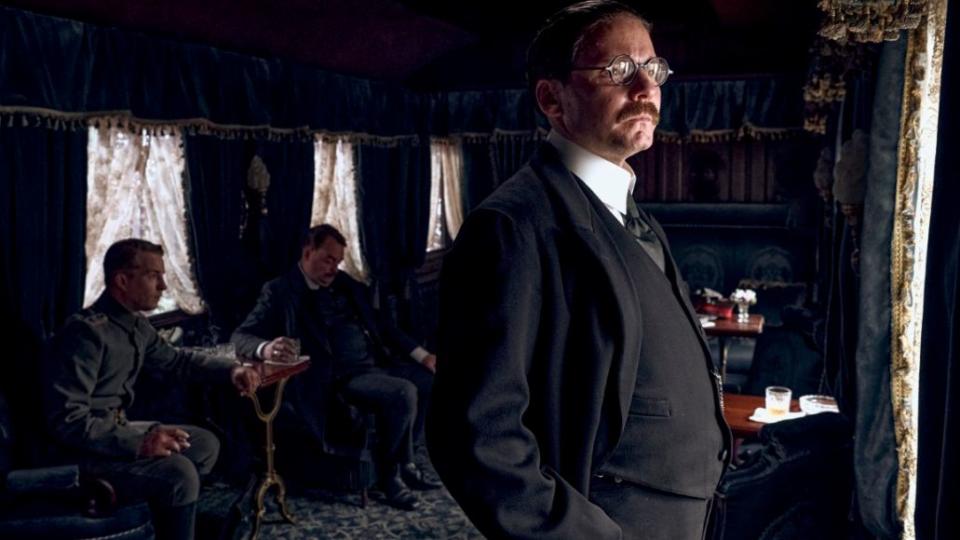All Quiet on the Western Front Is a Devastating Indictment of War: Review
- Oops!Something went wrong.Please try again later.
The post All Quiet on the Western Front Is a Devastating Indictment of War: Review appeared first on Consequence.
The Pitch: It’s 1917 (no, not that one), and Germany is on the back foot fighting the French in the First World War. Piles of bodies stack up in the trenches of the Western Front — hundreds of thousands, just to advance and retreat over the same few hundred yards — with new regiments of fresh-faced recruits to fill their dead comrades’ hastily-repaired uniforms.
One such kid is Paul Bäumer (Felix Kammerer), lured to war by blustering politicians and schoolmasters who romanticize the glory they’ll bring to themselves and Germany. It’s not long before Paul and his schoolmates are disabused of that notion: War, as they say, is hell, and the bleak conditions and bursts of bloody violence wipe clean the innocence from their faces. Soon, it becomes less about winning the war than getting out alive.
We Have So Much To Say… It’s strange to think it’s taken this long to get an honest-to-goodness German adaptation of Erich Maria Remarque’s seminal 1928 novel, following Lewis Milestone’s Oscar-winning American version in 1930.
But Edward Berger’s take on the material feels stark, visceral, and urgent, even as it streamlines the book in some ways while needlessly complicating it in others. It’s a film with singular purpose: To hammer home to its audience the horrors of war, and it wants to offer that point in no uncertain terms, no matter how much blood must be spilled or how many souls must be destroyed.
Even before we meet Paul, Berger sets him up as just more meat for the grinder: In its brilliant opening minutes, we follow a soldier named Heinrich in the heat of battle, eventually shot and killed while the rest of his friends fall shouting his name.
Then, just like that, he’s disposed of — his dog tags taken, his body stripped of its uniform, and the bullet holes in the fabric stitched together in a busy, noisy warehouse. (The rat-a-tat of the sewing machine takes on the repeater pattern of a machine gun, one of the film’s grimmest bits of sound design.) Paul gets this uniform and notices the name tag; the recruiter reassures him that it just probably wasn’t Heinrich’s size. But thanks to Berger, we know better.

All Quiet on the Western Front (Netflix)
From there, Berger takes us (and Paul) down two and a half hours of devastating, harrowing warfare, where victories are scarce and losses are high. At first, Paul finds solace in his old schoolmates and forges a particularly strong bond with an illiterate cobbler named Kat (Albrecht Schuch), who teaches him how to survive and stay sane within the long stretches of boredom. They laugh over a gambit to steal a goose from a farmer, or huddle together over double portions of soup. Paul reads Kat a letter from home, bonding over the tragic news it carries.
But in battle after battle, the mud, blood, and viscera chip away at Paul’s fantasies of glory, one bullet at a time. Kammerer cuts a striking, gaunt visage for Berger to center his camera on; his wide eyes carry years of pain within them, whether he’s beholding the horrifying death of a friend by flamethrower or scrambling across the fields dodging rifle fire. Berger frequently coats Kammerer’s face in blood, soot, and mud, caking half his face in a calcified crust of terror.
James Friend’s cinematography is a canvas of dust and smoke, with the occasional sunrise peeking out over the chaos to tease the life of peace these boys will never see. And Volker Bertelmann’s score adds another coat of terror, a rumbling three-note melody bursting from a harmonium to herald the accompanying death march.
In the film’s starkest setpiece, Paul scrambles to stab a French soldier in a muddy, bombed-out crater, only to watch in horror as the man bleeds out far too slowly to ignore his humanity. It’s a moment of devastating intimacy, as Paul’s humanity bubbles to the surface and he rushes to save the soldier’s life. He’s too late, of course, but it’s the up-close portrait of what it really means to wage war — not scoring points on a board, but savagely ripping apart the bodies of young men with families and hopes and dreams — that Berger yearns to impart.
…And We Will Never Say It: In the film’s most curious deviation from the book, Berger’s version often pulls away from the individual struggles of soldiers at the front to the officers and diplomats working the battle plans and negotiating tables, surrounded by ornate German architecture and elegantly-prepared feasts, their hands clean from soot and soldier’s guts.
In particular, he follows German politician Matthias Erzberger (a patient Daniel Brühl) as he struggles to get the intransigent French diplomats to sign the armistice that will bring all this fighting to the end. It’s a noble gesture (akin to Kubrick’s treatment of class in warfare in Paths of Glory), and an understandable one: its placement within the film’s structure makes ever clearer how futile Paul’s life-or-death struggles truly are.

All Quiet on the Western Front (Netflix)
But the transitions between both stories are a little awkward at times, and often feel unnecessary. After all, we’re plenty sympathetic to Paul, as we live in these daily horrors alongside him and see him lose one friend after another to gunfire or flames or twists of fate.
The absence of the decision-makers from the real fight is already apparent in their lack of presence at the front; in one scene, we see the cost of that as Paul and company come across a pile of dead, young soldiers who took their gas masks off too early after entering a room. No one told them better. It’s the blind leading the blind, a war waged by scared kids who just want to go home. You don’t need endless scenes of haughty generals in conference rooms, or negotiators packed in a too-clean train car, to accomplish that.
The Verdict: Berger’s take on All Quiet on the Western Front is a searing indictment of the futility of war, one that knows the way conflict erodes the human soul and the machinery that keeps that erosion moving. Its battle scenes are as impressively staged as they are visceral to watch, despite a few hinky ropes of CGI here and there.
But the essence remains, as headshots plink off helmets and soldiers stab themselves with forks just to put themselves out of their misery: No one should ever have to experience this again. And in its final minutes, as we see another fresh-faced boy collecting dog tags on the battlefield, we hope against hope that the same fate won’t befall him.
(We know it will, of course; there’s a reason we call it World War One.)
Where’s It Playing? All Quiet on the Western Front tosses you in the trenches to see the horrors of war firsthand on Netflix October 28th.
Trailer:
All Quiet on the Western Front Is a Devastating Indictment of War: Review
Clint Worthington
Popular Posts
Leslie Jordan Killed in Car Crash After Suffering Medical Emergency
Kanye West Escorted Out of Skechers Headquarters After Showing Up Uninvited
All 275 Songs Jack Antonoff Has Produced, Ranked From Worst to Best
Kid's Impressive Street Performance of "Master of Puppets" Earns Props from Metallica: Watch
Kanye West Tried to Intimidate Adidas Executives by Showing Them Porn

